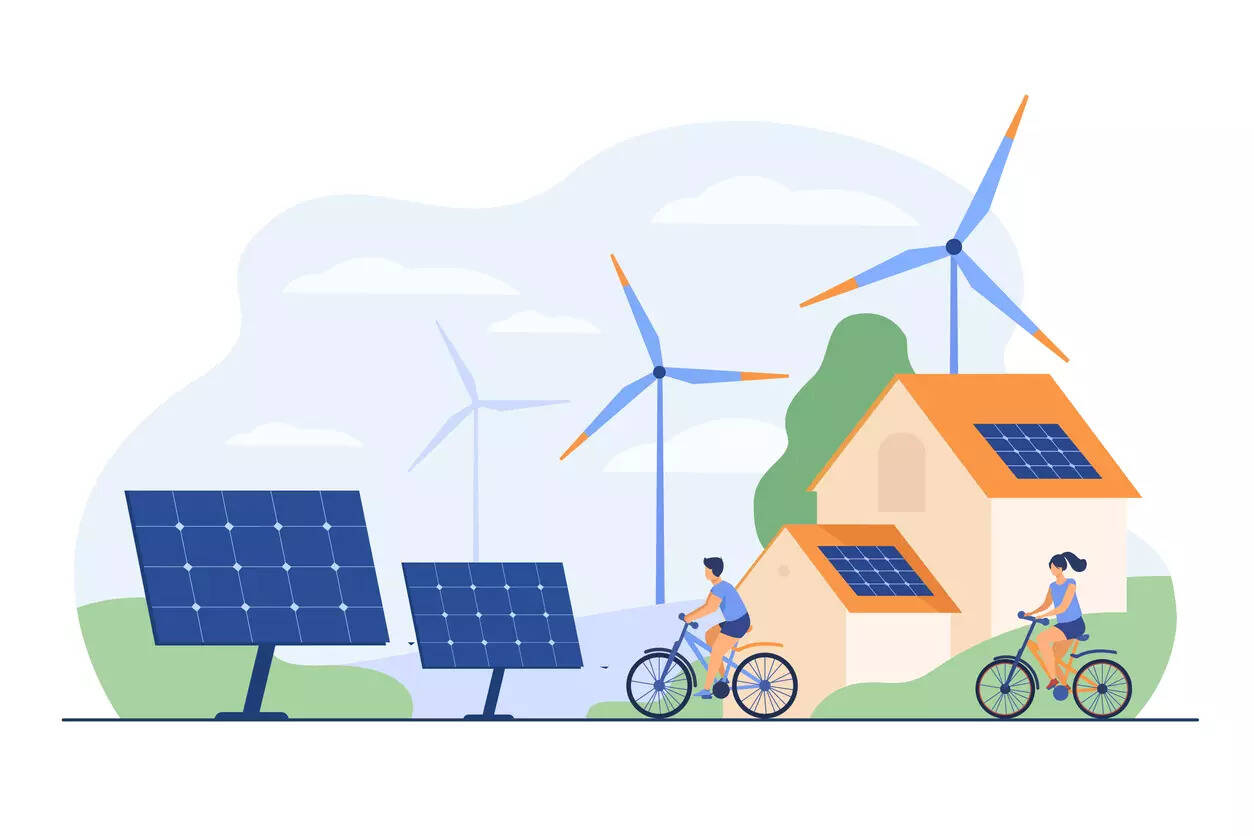
New Delhi: Engie India, the India arm of French energy giant, plans to invest about INR 3,500 crore for its 700-MW renewable energy projects slated to be commissioned by 2025, its Chief Executive Officer and Country Manager, Amit Jain, told ETEnergyWorld in an exclusive interaction. The company also plans to double its operational capacity by 2025. Edited excerpts:
Tell us about your company’s renewable energy operations in India.
We have been in India since 2014. We entered with the acquisition of a company called Solar Direct. At that time, the portfolio was somewhere close to about 300 megawatts (MW) of operational assets. Gradually we built it up. Right now we have about 1.1 gigawatt (GW) of operational assets spread across seven states and 17 different sites. These assets are both wind and solar, but primarily solar. We have about 250 MW to 300 MW of wind capacity and the rest is all solar.
Apart from the 1.1 GW of operation capacity we have additionally secured two projects of 700 MW of total capacity recently, which are under construction. The 400 MW project will start construction soon and the remaining 300 MW, we are waiting to sign a PPA with NTPC.
We have 250 MW wind capacity and the remaining is solar capacity. So, out of the total 1.8 GW, about 1.45 GW is solar capacity.
What are your investment targets for these projects?
For 400 MW, we are roughly looking at INR 2,000 crore of capex that we will spend on it. For 300 MW, it will be about INR 1,000 crore to INR 1,500 crore… One project is in Gujarat and the other is in Rajasthan.
The 400 MW project will be completed in second quarter (Q2) of 2024 and the 300 MW will be commissioned in Q2 of 2025.
Will Engie be looking majorly at solar energy operations for its future projects in India?
In the short term, yes. Though, our plan is to gradually move away from plain-vanilla solar projects to solar with storage, and then hybrid or dispatchable projects as well. We are following the transition.
We plan to double our operational capacity by 2025.
What is your overall business outlook for the coming years in the energy transition space in India?
Globally, we operate across four different business units, renewables is one of them. Then there is the networks segment – gas networks and electricity or power transmission networks. Energy solutions segment where we look at providing energy efficiency services to clients including district heating and cooling, and then flex-gen and retail which is for green hydrogen and standalone battery storage.
In renewables, we are looking at doing more complex tenders… We have been doing standalone solar and wind. Now with the dispatchable renewable power we are looking at those kinds of tenders in the future more and I think the market is also moving towards that. So maybe hybrid projects with wind, solar battery storage.
On the network side, we shall start to evaluate the power transmission network, whether it makes sense for us to make that investment into India or not. On energy solutions, we have a JV with Mubadala called Tabreed which is held 40 per cent by us, and they have recently secured a district cooling contract in Hyderabad.
On flex-gen and retail, we are looking at possibility of standalone storage and green hydrogen especially where in the value chain can we play a part inWe might look to focus on renewables only in the green hydrogen value chainto begin with. That is also being evaluatedat the moment.
You mentioned assessing the hydrogen value chain. What kind of projects are you looking? Is it for green hydrogen?
Yes, primarily green hydrogen. That is our focus. We don’t not have any future plans of getting into electrolyser manufacturing but we do plan to enter the generation of green hydrogen.
We recently secured a contract in Oman with Posco as a partner and other financial investors. There we are looking at the entire value chain where we provide the entire technical solution to the partner and also export of hydrogen from Oman to Korea where Posco is located.
We are looking at whether such kind of a partnerships makes sense in India. At the moment, it is just discussions on how we can make it work and assessing the feasibility of the market, especially for exports of hydrogen.
What is your sense regarding India’s policy space in green hydrogen?
The government is doing well in giving concessions for transmission waivers, especially for green molecules to be transferred.
On the policy side, the PLF schemes could help to bringdown the cost of the electrolyzers, and the efficiency of electrolytes. That is when the market in India will probably reach a tipping point.
You also mentioned about 250 MW of wind capacity, what are your thoughts around offshore wind?
It has the potential especially along the coast of Tamil Nadu and Gujarat. But the challenge again is the tariffs or the expectation of tariffs that we could get from offshore wind as these projects have long gestation periods.
These projects also require the entire back end… The turbines are very large so the ports need to be upgraded. The first few rounds may not see low tariffs but gradually as the industry matures, it is more likely that we will hit the tariffs that we get into Europe or the US.
Today, the entire universe of these turbines from manufacturing, logistics, to the interconnectivity, all need to fall in place for us to get the tariffs that could compete with the tariffs that we get on onshore wind or solar.
Will you be heading into this segment?
We are are watching this space and also had a team visit to India about a year ago to met all the stakeholders. But for reasons mentioned earlier we feel it is a bit early for us today.
What is your take on India’s carbon reduction targets and carbon trading plans?
India is a growing economy and that is the reason why having baseload generation is important. Renewables unfortunately today does not provide baseload generation though with renewbales plus batteries we are getting there. It is estimated though that renewables could help in reducing the carbon emissions for India by 50 per cent, which is our target until 2030. However, for the balance 50 per cent to reach net zero, it is important to focus on technological innovations that could be commercially viable in the coming years.
That is where I see that we should focus on, not only for India but even for other global economies to fast-track their net-zero ambition.
We have an entity called the global energy management system and they are looking to set up an office in India, starting next year. They look at carbon trading specialists and also trading on gas and LNG. We provide carbon credit trading for some of the customers that are there in India… There is a big market there for India.
Carbon capture is an expensive technology. Is it right to put such weight behind this technology in India?
Carbon capture is one solution, maybe it is not the solution for India because it is more for those economies where gas and pipelines are already in place.
However, for India, it may not be the case… it could be one of the solutions, but it needs to make sense at the end of the day. These things need to scale up pretty quickly for us to be able to provide baseload for the manufacturing which is growing even at a faster pace than the demand and supply.
What about small modular reactors, what is your perspective on that from India point of view?
They could work but again it is about the cost-benefit analysis. It takes time for these reactors to come on board… It will take about five to seven years to get these reactors up and running if you plan today… Plus, the cost associated with it. Once it is up and running, then it is a stable generation.
Rather than looking at making more investments into different forms of energy which India does not have today, gas and even green gas for instance could play the role of that transition fuel for India to move from baseload coal to renewables.
What kind of challenges are there when it comes to green financing?
There is liquidity in the market for good projects, so we are not seeing any challenges there.
It, however, would help to have long term hedges in Indian rupee, euro, or dollar which today are not available in the market. As the market matures, that could help international companies to avoid the effects of foreign exchange losses.

